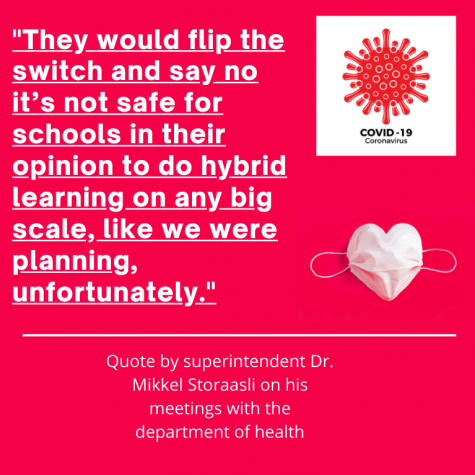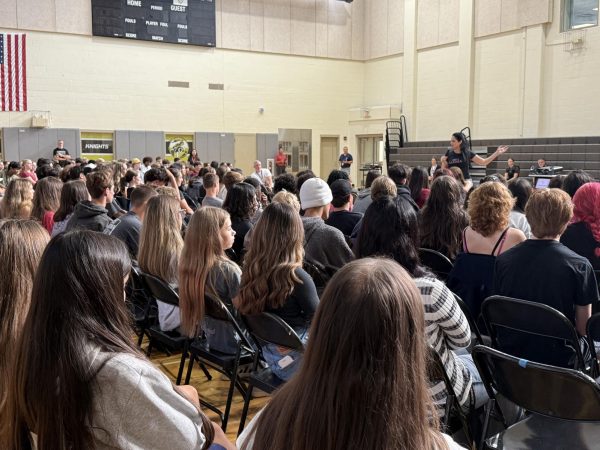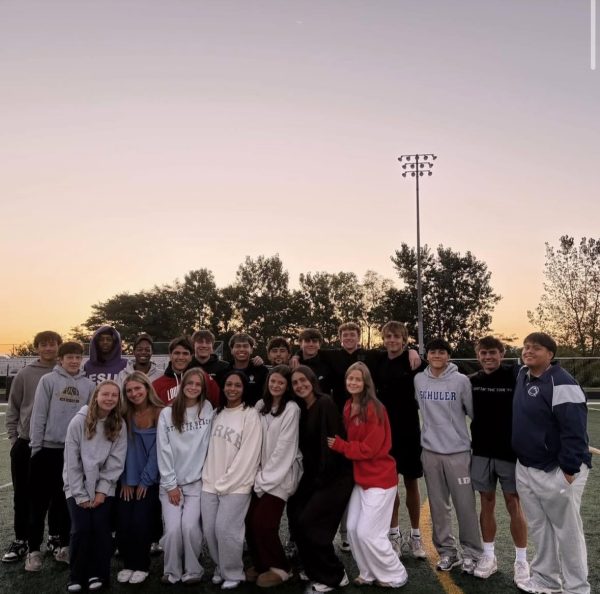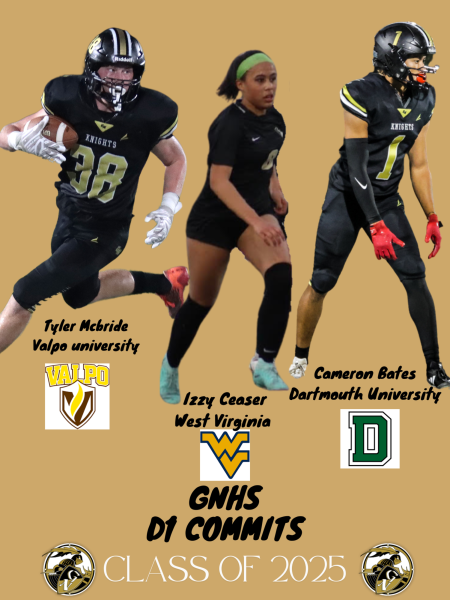District’s hybrid plan pushed back due to COVID-19
Grayslake North was supposed to implement a hybrid model plan that got pushed back due to safety concerns.
The plan moved from a 33 percent model to a 50 percent model with an “A” and “B” group. In order to figure out who would be in each group, they started with household addresses, for those with different last names in the same household, to generally get 50 percent of students. Classes did not need to be exactly 50 percent, as long as they were under the recommended number of students in that classroom.
“Just because I split it by household and I divide right down the middle, that doesn’t mean first period is going to be exactly 50 percent and second period’s going to be exactly. So you have to go through literally almost every section. Now it might not be equal just as long as I’m going under that guideline,” said principal Dr. James Roscoe.
In order to keep classrooms safe, staff measured out six feet distance with desks and to maintain a general limit of 12 students per class. Some classrooms are smaller and can hold less students, so smaller class sizes would move to the smaller rooms while bigger class sizes would move to bigger rooms.
“The goal is I want to get as many as I can in while adhering to safety. So if I can go to half great if I can go to more than a half and achieve safety let’s do that. But that was the reason we were able to move it to half,” Roscoe said.
Staff must lead by example for wearing masks in order to help ensure masks are properly worn at all times. If students are unable to follow safety guidelines, a call would be made home along with a conversation with the dean.
“I think we’ve been doing this long enough. I think everybody knows what we’re supposed to be doing. The mask thing is first and foremost. The masks have to be on; it’s just a matter of communicating with students. Once we would start this, teachers, administrators, everyone, all making sure hey if we see a mask coming down it happens, but while we’re here at school, it’s really important not to do that,” said superintendent Dr. Mikkel Storaasli. “If a student absolutely can not do it for whatever reason, we’re just going to have to say your option is to stay remote, just stay at home. I think that would be the ultimate thing, but I don’t see it being a problem. Social distancing is a little harder. It’s the same kind of thing you just have to watch yourselves, know and call ourselves on it.”
Many students will be as safe as they can in school, but traveling outside of school can still increase the spread.
“I will follow COVID guidelines for as long as it’s recommended,” said senior Kaylee McCaslen. “But I work at a restaurant, and during this second shut down, we are staying open. So I guess I’m already breaking them.”
No more than 25 students were allowed in any one room, which included the cafeteria. If students have a study hall or a free period, there are designated spaces to be. The cafeteria will still provide food for students on free reduced lunch so that they will still be able to eat with grab and go lunch.
“There’s no lunch. Because of the safety guidelines, we can’t be in a group eating. Masks have to be worn at all times. So that was one way we could do a hybrid model by 50 percent was by not having lunch,” Roscoe said.
Students miss having lunch in person with their friends, but other chances to socialize at school are not presented through remote learning.
“I miss the social aspect of school. In remote learning, there aren’t really opportunities to talk to other students naturally in class about things other than school. We also don’t have passing periods, lunch, or before school to do this either. This social aspect is something I really miss, and it just can’t be replicated at all during remote,” said senior Jacquiline Weekly.
Students that chose hybrid, miss their classmates and interacting with each other. This was especially hard for seniors where it will be their last year to see many of these people.
“Hybrid outweighs remote learning for me because I’ll be able to see my fellow classmates before I go off to college and never see them again as well as the fact I’ll actually be able to do labs for my science classes,” McCaslen said.
Rules for buses included six feet distancing and having less than 50 students on a bus. There were also plans for buses to still show up for extracurriculars in this model.
“Our bus routes are going to be much far less than 50 students, no more than one per seat of course, but doing the best we can to make sure students are not towered right on top of each other,” Storaasli said.
Superintendents in Lake County have a weekly meeting with the department of health and some of his employees. If cases went above eight percent or 14 cases per 100,00 over a seven day rolling period, schools would not be allowed to open hybrids.
“He said just be aware, superintendents, the incident rates, the positivity rates are going to go up probably pretty quickly. He also clued us in to the mitigation of Lake County, like that’s probably going to happen because they can see the data before us. So he was trying to give us a heads up that that was coming. We’ve been working really closely with them to understand how they’re interpreting this data and what data is really important,” Storaasli said. “They would flip the switch and say no it’s not safe for schools in their opinion to do hybrid learning on any big scale, like we were planning, unfortunately. And he tried to give us a heads up. It was the week prior, and he said probably toward the end of the week it’s going to go there, and we were ready, and so the next week it was a lot faster than we thought.”

If the school was to go back to in person, it could increase the spread and positivity for students. While some students would have enjoyed going back, they respect the school’s decision.
“One worry I have about the hybrid model is that coronavirus cases will affect me or other students and teachers and we will have to shut down again. However, I do think the school is doing well by making the hard decision to stay in remote until they can be absolutely certain it will be as safe as possible for us to return,” Weekly said.
If some students are remote and some are in person, there could be some potential learning disadvantages for those that are remote and is a concern of some students.
“I’m worried that we will lose lecture time on the hybrid model, and that those who couldn’t go in that day will miss valuable material or will not be able to see the examples on the board just based on what I heard from one of my teachers,” McCaslen said.
This is not a concern for students to have to worry about now, as the hybrid model has been pushed back again due to too high of cases.





